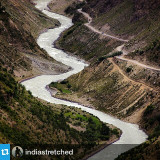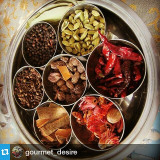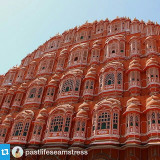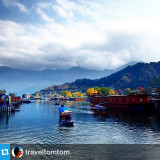Random image from our India photo collection

Lakshadweep
The Underwaters
The creator of all the underwater beauty and the coral reef is the polyp. It secretes a cup-like calcareous skeleton into which it can withdraw. It multiplies by successive budding. In due course, complex structures of polyp cups are formed and attached to the underwater rock platform. The colony grows whenever the depth is short enough for light to pierce and this is a condition which is very common in shallow lagoons.
Eventually reefs are formed and these enclose the shallow saltwater lakes, called lagoons. The decayed and dead coral, broken into fragments and sediments of decaying organic matter, along with droppings of birds, combine on the reef to give it a fertile soil.
The rate of nutrient turnover is high and the variety of animal life that establishes itself here is vast. Coral reefs and lagoons shelter the most complex and organized community of living creatures of the sea.
The Lakshadweep reefs flourish in more than a thousand species of fish, all dazzling in color and weird in pattern and shape.
The poisonous stonefish, camouflage themselves so effectively on coral ledges and rocks that they are almost impossible to make out.
Seashells with pretty designs are found here in abundance. The reef flats are exposed at low tides. Attached to rocks or stones are the hydroids, sponges, corals and sea anemones. Trapped in between the tides and taking shelter under boulders or in shallow pools, are bottom dwelling marine invertebrates like sand dollars, sea cucumbers, sea stars and sea urchins.
Go back
Eventually reefs are formed and these enclose the shallow saltwater lakes, called lagoons. The decayed and dead coral, broken into fragments and sediments of decaying organic matter, along with droppings of birds, combine on the reef to give it a fertile soil.
The rate of nutrient turnover is high and the variety of animal life that establishes itself here is vast. Coral reefs and lagoons shelter the most complex and organized community of living creatures of the sea.
The Lakshadweep reefs flourish in more than a thousand species of fish, all dazzling in color and weird in pattern and shape.
The poisonous stonefish, camouflage themselves so effectively on coral ledges and rocks that they are almost impossible to make out.
Seashells with pretty designs are found here in abundance. The reef flats are exposed at low tides. Attached to rocks or stones are the hydroids, sponges, corals and sea anemones. Trapped in between the tides and taking shelter under boulders or in shallow pools, are bottom dwelling marine invertebrates like sand dollars, sea cucumbers, sea stars and sea urchins.
Go back









